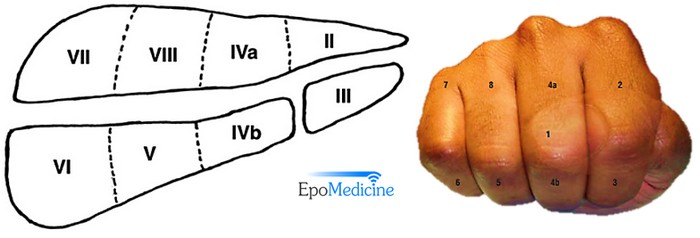Couniaud divided liver into 8 functional segments, each of which is supplied by it’s own portal triad (composed of a portal vein, hepatic artery and a bile duct). Hepatic veins divide the liver in saggital plane: 1. Middle hepatic vein: Divides the liver into right and left functional lobe. 2….
Tag: General Surgery
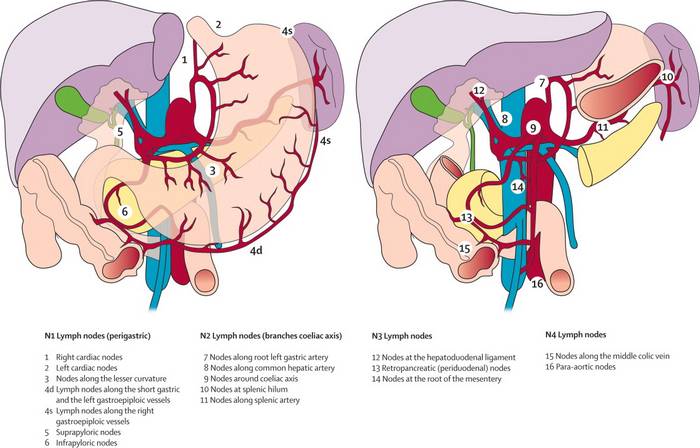
TNM and Staging of Gastric Carcinoma Simplified
Unique features of stomach in relation to TNM cancer classification 1. Cancer penetrates the muscular propria and invades the ligaments (gastrohepatic and gastrocolic, i.e. lesser and greater omentum respectively) subserosally without breeching the serosa. Gastric cancer invasion of the lesser and greater omentum is T3, not T4. Perforation of the…
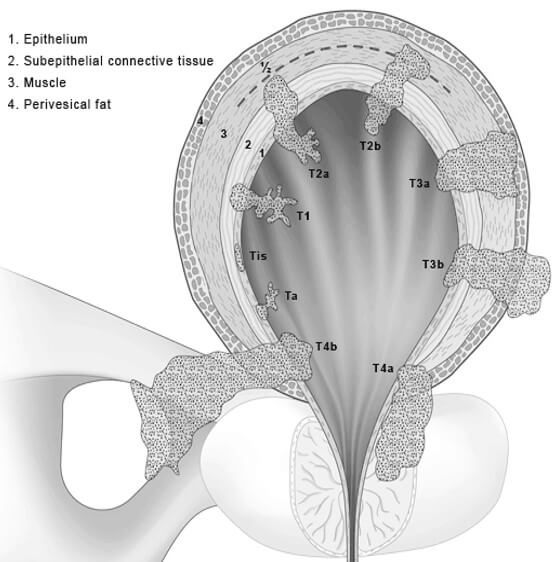
TNM and staging of Urinary Bladder Cancer Simplified
As discussed earlier in – TNM Classification and Cancer Staging Simplified, Urinary bladder is a hollow organ whose “T” classification resembles that of the gastrointestinal tract. Since, the regional lymph nodes of the urinary bladder also lie beyond the serosa like in colon and rectum, positive regional nodes are usually…
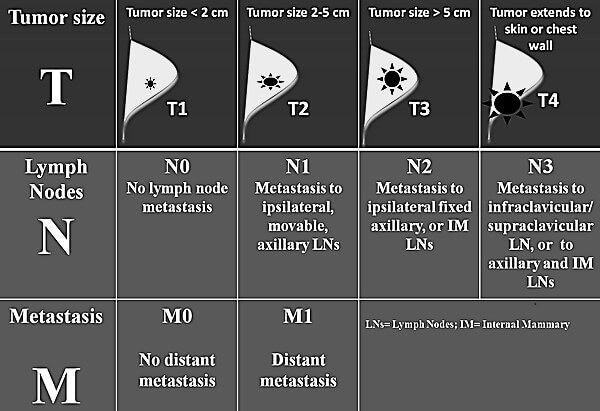
TNM and Staging of Breast Cancer Simplified
TNM Classification for Breast Cancer Primary Tumor (T) T1: ≤2 cm (20 mm) mi: ≤1 mm a: 1-5 mm b: 5-10 mm c: 10-20 mm T2: 2-5 cm T3: >5 cm T4: Direct extension to chest wall and/or skin a: Chest wall (exclude only pectoralis muscle adherence/invasion) b: Ipsilateral ulceration, satellite nodules…

TNM Classification and Cancer Staging Simplified
You must be asking yourself – “how to remember the TNM staging system?” and looking here and there for mnemonics only to find nowhere. Understanding the oncoanatomy helps to understand the staging system of the cancers. Tumor Status (T) T1 T2 T3 T4 Depth of invasion Solid organs Confined Capsule,…
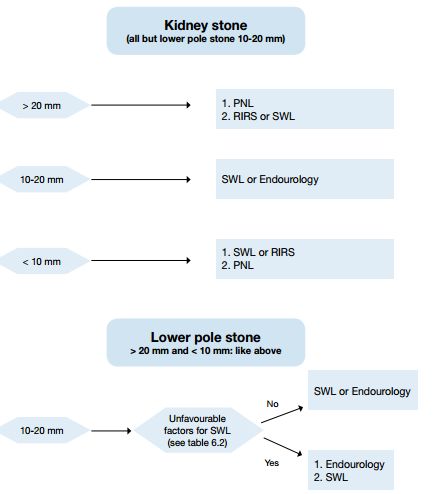
Answering Techniques for Surgery Papers
How to answer definitions ? Definitions are often asked in the exams – both in theory exams and viva-voce. As the content is vast, mugging them up is not a good idea. If you have a good understanding over the topic, you can write down a good definition by including…
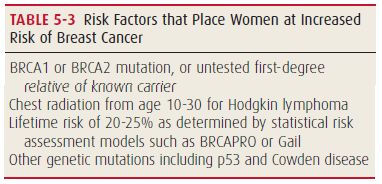
Breast Cancer Screening
ACS recommendations (2015) For women with average risk: 40-44 years: mammogram on patient’s choice 45-54 years: mammogram yearly >54 years: mammogram 2 yearly or yearly based on patient’s choice Women must be informed on the benefits and harms of mammographic screening Regular clinical breast exam and breast self-exam are not…
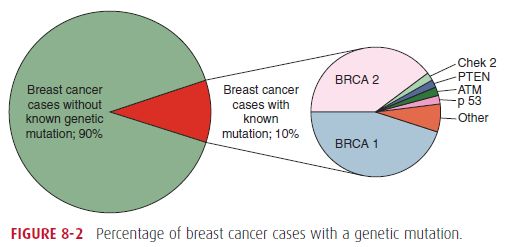
Breast Cancer Risk Factors with Mnemonics
EPIDEMIOLOGY OF BREAST CANCER Incidence: In general, less industrialized nations tend to have lower rates of breast cancer, with Japan being an exception to this rule. The highest rates are seen in Europe and North America. Age at onset: Race: incidence is higher among white women than African- American woman, but the mortality is higher…
